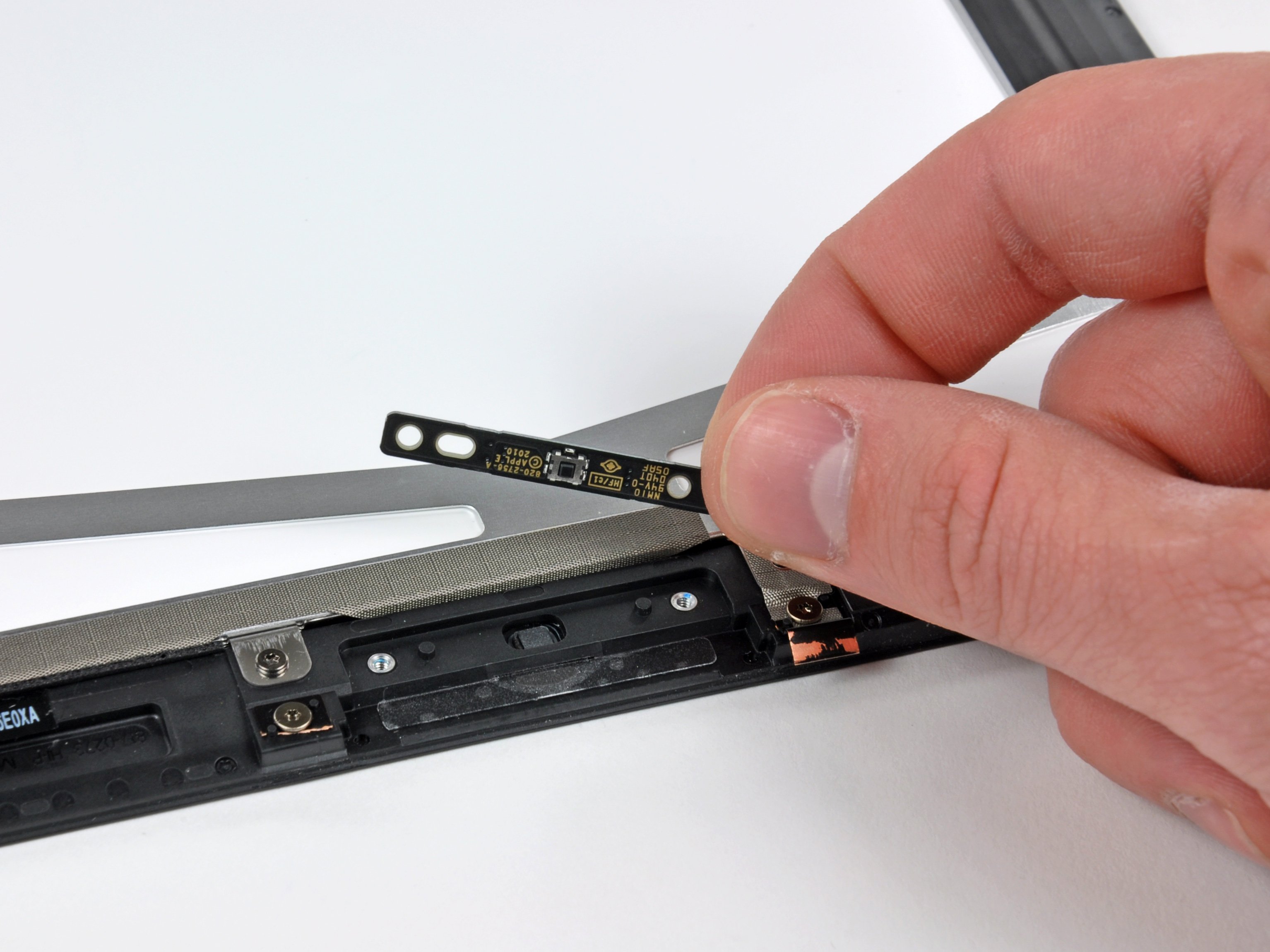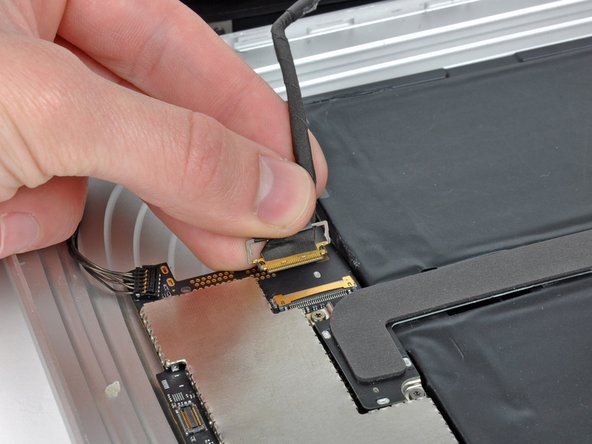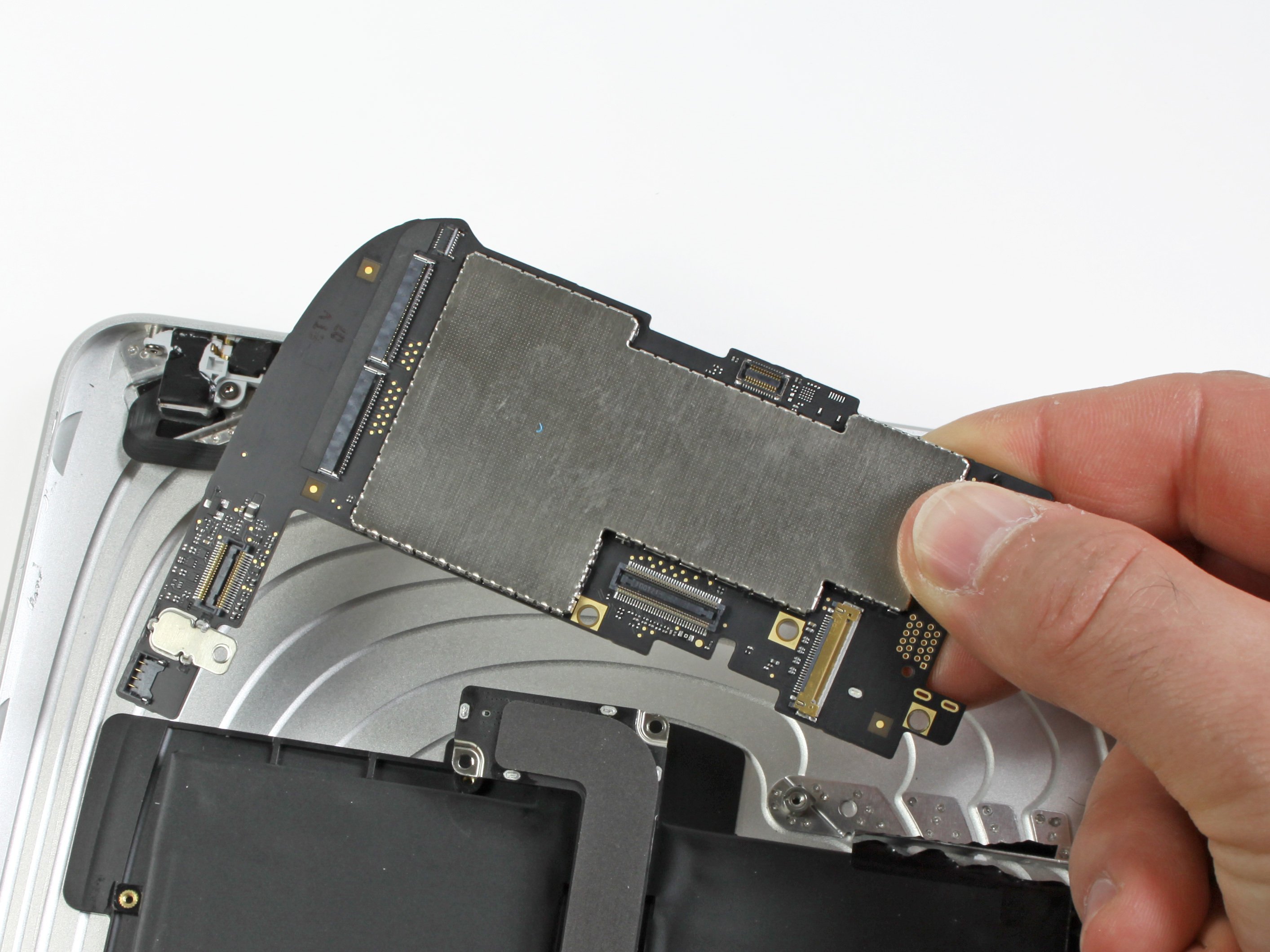iPad 3G Home Button Switch Replacement
Duration: 45 minutes
Steps: 13 Steps
Follow this guide to swap out the electronic part of your home button switch. Heads up: this doesn’t cover replacing the plastic home button cover that you actually press.
Step 1
Pop on some safety glasses to keep your eyes safe, and remember to handle that LCD screen with care. No cracks or scratches, alright?
This keeps any sneaky glass bits from flying everywhere and helps hold everything together while you carefully pry and lift the display.
- If your display glass is cracked, prevent further damage and keep things safe by taping it up. This will help avoid any accidents during your repair.
- Cover the entire face of the iPad with overlapping strips of clear packing tape. Make sure it's all protected!
- Follow the guide as best as you can. Just keep in mind that once the glass is cracked, it may keep breaking as you work. You might need to use a metal prying tool to gently scoop out the broken pieces. If that gets tricky, feel free to schedule a repair.
Step 2
Your iPad might not look exactly like the one in the pictures, but don’t worry—the steps are the same, so you’re good to go!
- Slide a metal spudger into the gap between the right side of the display assembly and the rear panel assembly. You're doing great!
- Gently twist the spudger away from you to pop the tabs loose along the top edge of the display. Keep it up!
Tools Used
Step 3
- Slide a second metal spudger in between the top edge of the display assembly and the rear panel to keep those sneaky tabs from snapping back.
- Gently pry the display assembly away from the rear panel like you're unveiling a secret.
Tools Used
Step 4
Heads up! As you work near the top edge of your iPad, be super gentle. There's a digitizer ribbon cable chilling close to the edge, and it's pretty easy to accidentally nick it.
- Keep on gently working your way around the bottom and left sides of the iPad, lifting the display away from the rear panel like you’re opening a stubborn book cover.
Step 5
Careful now! Don’t yank the display assembly too far from the iPad body—there’s a delicate antenna cable hanging on by just a little slack, and it’s not a fan of stretching. Keep it chill and gentle!
- Carefully lift the display assembly from the rear panel, starting at the bottom edge. Take your time, it's a little delicate, but you've got this!
Step 6
- Gently use the flat end of a spudger to lift the antenna connector nearest to the bottom of the iPad off its socket on the communications board. You've got this!
Step 7
- Next up, we’re going to unplug the three cables that connect the display assembly to the logic board. These cables keep your screen’s parts chatting away, so let’s gently disconnect:
- Digitizer
- Ambient Light Sensor
- Display Data Cable
Step 8
Make sure you're lifting the little flap, not the whole socket—this isn’t a magic trick, just some careful flipping!
- Grab your trusty iPod opening tool and gently flip up those tiny retaining flaps that are keeping the digitizer ribbon cables locked in place on the logic board. It’s like giving them a little freedom!
- Now, with a steady hand, pull those digitizer ribbon cables straight out of their sockets. Nice and easy—no tug-of-war needed.
Step 9
- Grab your trusty iPod opening tool and gently nudge the ambient light sensor connector upwards to pop it out of its socket. Easy peasy!
Step 10
Gently slide the connector away from the logic board, keeping it nice and flat.
- Gently pop up the metal latch using the black plastic tab—it's like giving your cable connector a little hat flip.
- Slide the cable connector out of its socket with care, like you're unplugging it from a cozy spot.
Step 11
- Gently lift the display assembly off the rear panel—think of it like peeling a sticker, but way more high-tech.
Step 12
- Unscrew the two T5 Torx screws that are holding the home button switch board to the display frame. Once they’re free, you’re one step closer to getting everything back in action!
Step 13
- Now it’s time to put everything back together! Just follow those steps backwards, and your device will be back in action. If you hit a snag or want a pro to handle it, you can always schedule a repair.




























